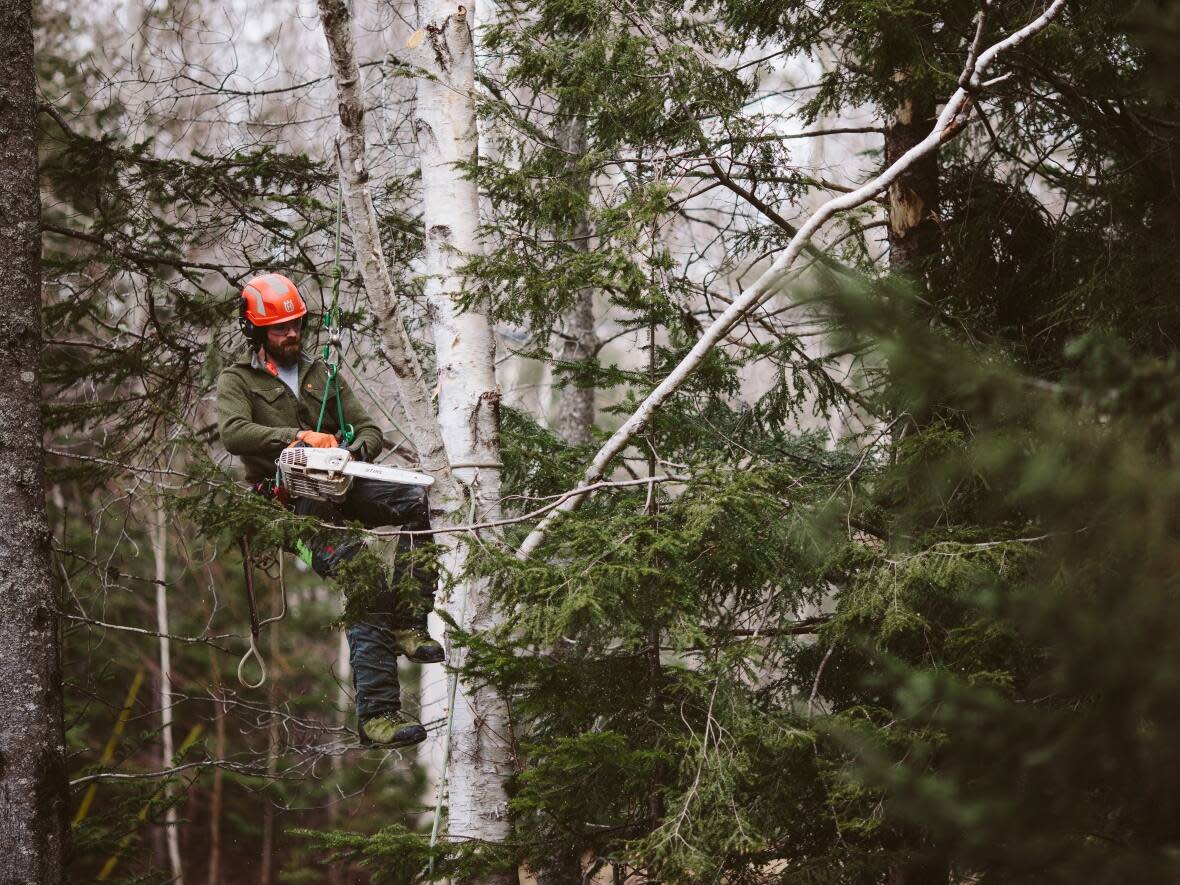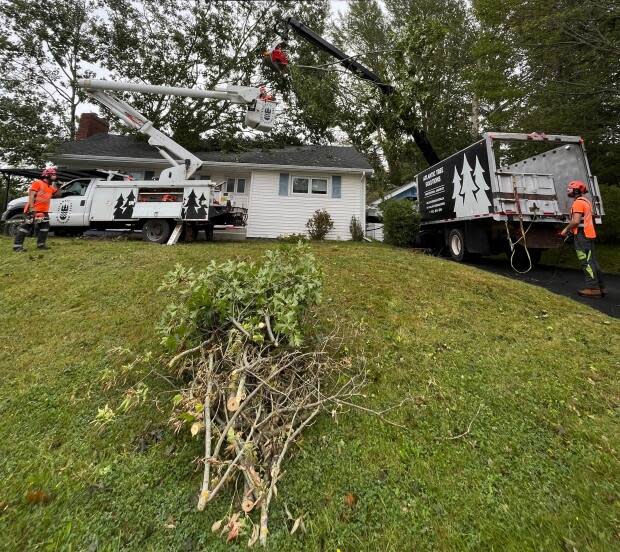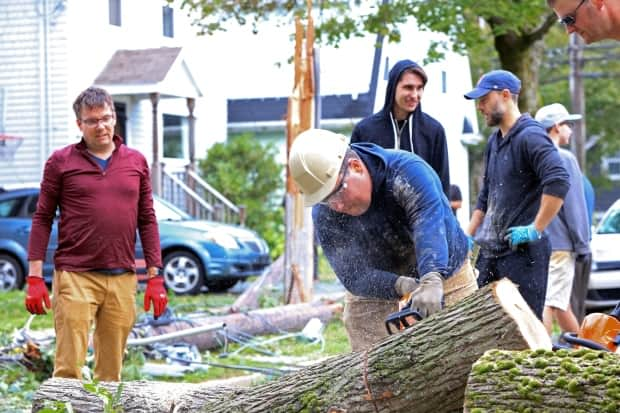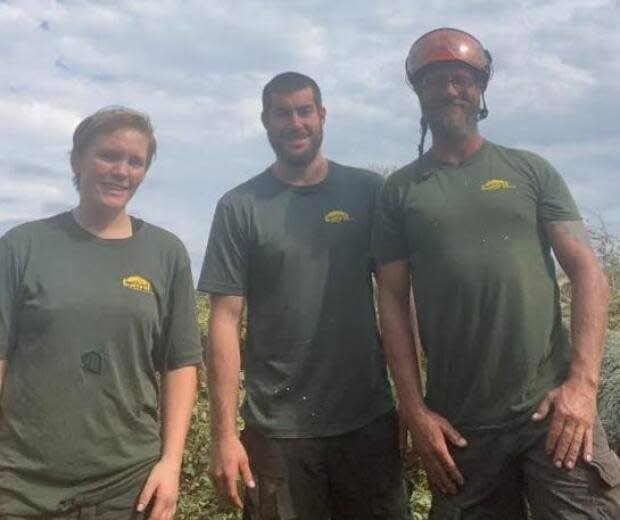How to stay safe while using a chainsaw

You may be hearing it around your neighbourhood these days — a symphony of chainsaws.
And while many Prince Edward Islanders may be trained to use a chainsaw, not everyone is taking safety precautions.
Earlier this week, P.E.I. emergency department physician Dr. Kay Dingwell tweeted: "From your friendly neighbourhood emerg doc: Holy crap, people — WEAR EYE PROTECTION WHEN CHAINSAWING. We only have so many ophthalmologists."
Professionals agree that wearing proper personal protective equipment or PPE is critical when using a chainsaw. That means everything from steel-toed footwear to sturdy pants to gloves to goggles, ear protection and a helmet.
Mitch Jamieson is the owner and founder of Atlantic Tree Solutions in Truro, N.S. He's given chainsaw safety courses here on P.E.I. and around the region.
He says he knows people really want to clean up their yards, but they should think first before starting up a chainsaw.

"The chainsaw is an extremely dangerous tool, especially in the hands of someone who hasn't been trained how to use it," he told CBC News. "And then to pair that with not wearing PPE — it's a recipe for getting hurt."
At the very minimum, Jamieson said, you should wear properly fitting chainsaw chaps or pants in good condition.
The chainsaw is an extremely dangerous tool, especially in the hands of someone who hasn't been trained how to use it... It's a recipe for getting hurt.
— Mitch Jamieson
"Also, hearing protection and eye protection are very important, and if you're doing anything where there's a threat to the upper body, there needs to be a hard hat or helmet as well."
Jamieson said people should also make sure their chainsaw is working properly and all the safeguards are in place on the equipment.
"It is important for people to remember that PPE is a last line of defence, so it's what's going to stop you from possibly cutting your leg off. But it's good working practices, safeguards on the chainsaw, and at the end of the day, it's really knowledge about using the tool that's going to keep people safe."

No shorts, no sneakers
Jamieson knows people don't necessarily think they need training.
"Because we were so rural here in the Maritimes, a lot of us have grown up with family members who had a chainsaw. And so sometimes it gets looked at as a tool that anybody can use — and anyone absolutely can use it. But the only way to do it safely is to have training in it, for sure."
Amazingly, Jamieson said he's seen people running a chainsaw this week while wearing shorts and sneakers.
"I wondered, you know, when we were working on Saturday, it was still a very windy day. There were still trees failing.
"I heard sirens going all day, I saw fire trucks going all day…and it crossed my mind, you know: 'I wonder if any of those are medical calls from somebody who's hurt themselves,' either with the chainsaw or just hurt themselves doing tree work."
He said storm tree work is extremely hazardous because there are a lot of variables at play.
"Even experts still have to stop and carefully evaluate what's going on and make a plan before we even start to get to work."
Fatigue is a sign to stop
Kurt Laird from Laird Tree Care on P.E.I. agrees.
He said he worries about people who are used to cutting their own firewood taking on a bigger, more dangerous project after Fiona.

"It's much different than something that has dynamic forces on it, and that's where the problems come, where branches and pieces of wood go where you're not expecting them to go. It happens to the best of us, you know. One day last week a branch hit me right in the lip."
If somebody's not fresh, then they're more than welcome to take a break.
— Kurt Laird
He added that fatigue is something else to think about.
"We try to keep everybody fresh, and if somebody's not fresh, then they're more than welcome to take a break or go home, you know, and get a rest."
In terms of training, there are several options in the region, including Macphail Woods Ecological Forestry Project, which regularly offers chainsaw safety courses.

 Yahoo Movies
Yahoo Movies 
